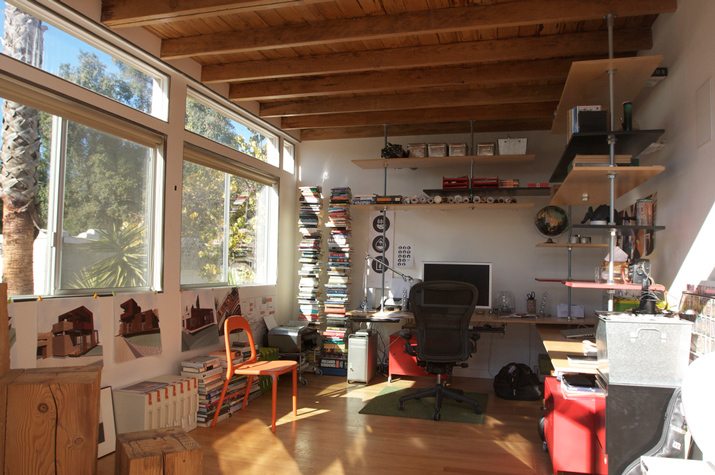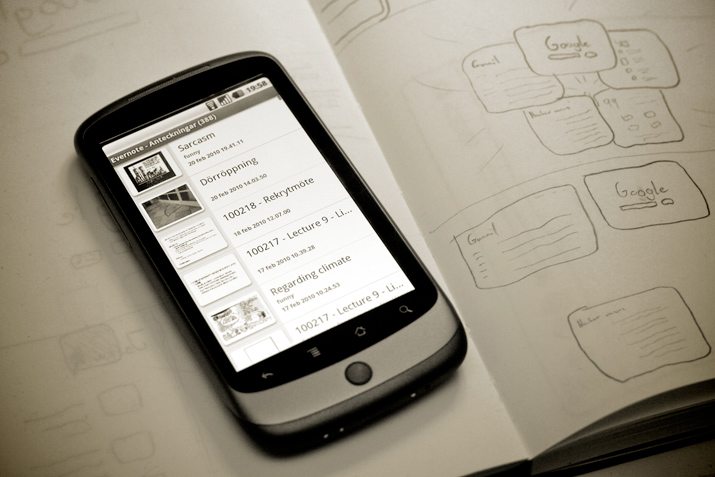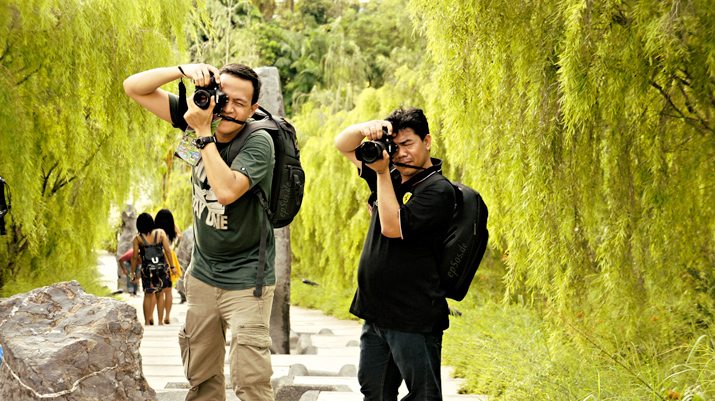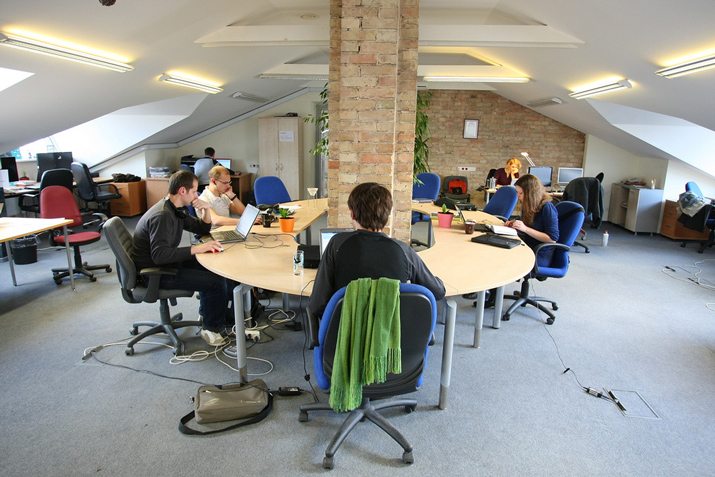Freelancing 101: Tips for Working From Home
Working from home can be one of the greatest perks of doing freelance work. It can also lead to the most distractions and enable procrastination. (How many times have you taken the dog for a walk when a project deadline looms?)
You can create a more conducive home workspace that actually encourages you to get things done. Working from home can be an easy, and enjoyable, part of your freelance life if you set yourself up to be productive, happy and avoid home place distractions. Here are 10 ways you can help yourself when it comes to working from home.
1. Develop a Workspace and Ground Rules

Making the most of working from home starts with the area where you work. A dedicated home office space is the best option, particularly a room with a door if you need quiet or to block out other things happening in your household.
This space should be set up and organized for your style of work and productivity. While everyone likes a different type of space, create something that works for you. Remember to make it a work space, and remove all personal stuff, such as household bills or that novel you are reading. Those things will distract you in a flash.
Stock your office space with supplies – pens, paper, tape, a stapler, books, anything you might need to work without leaving your space. Keep a list of needed items for when you do go on a supplies run.
Then set ground rules for your workspace – personally and for other people that live in your house. My rules are posted on the office door:
- First, pretend like I am not here
- If the door is closed, knock
- Visits are limited to 5 minutes
- Office space is not for other activity
- Do not touch my desk or computer … ever
2. Create a Check Sheet
Start the week or day or project with a check sheet of tasks. Knowing that you are getting things done is a strong motivator to keep working. I use the online tool Todoist to keep track of freelance work and projects, but a paper list can be just as effective.
This sheet includes every task, no matter how big or small. Then you can tackle items one at a time until your workday ends. The status of remaining items on the list will also help you get started the next day when you get to the “office.”
This can be an important tool for freelancers that work from home because many people organize their day during the commute to and from work. A running list can be an easy way to stay organized and on-task.
3. Manage Time Well

Just because you are sitting in front of the computer does not mean you are working. Don’t let online distractions keep you from working. Turn off Facebook, Twitter and personal email accounts. (Yes, you should use a separate email address for work.)
Not only will avoiding digital distractions help you work more efficiently, it will also help you get done faster. Remember, one of the great advantages of freelancing can be working on your own time. If a project only takes two hours, rather than four hours with distractions, you have that extra time to really spend doing something you want to.
4. Get Dressed
Stop working in your pajamas. Every freelancer I know talks about how this is one of the benefits of the job. It’s not. Get dressed for work every single day.
This is not to say you need suits for the home office, but put on clean clothes, brush your teeth and treat the home office as an office. You will feel more confident, productive and won’t have to take a shower break if you have to run out for a client meeting or take a Skype call.
5. Set ‘Regular’ Office Hours

You don’t need to be glued to a desk chair or computer 40 hours a week, but you should have regular office hours. (This also helps with the household ground rules.)
Regular office hours should include at least some time during standard working hours (typically 9 a.m. to 5 p.m.) for client meetings, returning phone calls and working with vendors. (I aim for about half of my office time to fall during these hours.)
The remainder of your regular office schedule can be during times that work for you. (My workday, for example, often begins at 5:30 a.m. and runs through 2 p.m.)
Stick to this schedule as best you can. Try not to set meetings outside of your workday. And if you do, remember to “comp your time” during another part of the day.
6. Schedule Breaks and Lunch
Treat working from home in the same manner you would if you were working for someone else. Schedule a time for breaks and lunch. Get away from your desk.
Talk a walk. Go out for food. Or work on those household chores that are calling during these times. Just remember to stay in the set time you plan and get back to work when the break is over.
7. Keep Track of Spending and Saving

Many freelancers branch out to save time and money. By avoiding a daily commute or trip to the coffee shop, savings can add up quickly. But remember costs as well – office supplies, taxes and other expenses factor in.
Keep a detailed report of both spending and savings to make sure that working from home is working for you. Just the idea that it costs you more to work out of a traditional office can lead to decreased productivity.
You need to feel confident and productive in your workspace to make the most out of working from home. If distractions, wasted time or cost is weighing you down, it might be worth looking for an alternative space such as going back to a traditional workplace or looking for a co-working space to operate out of.
8. Stay Organized
While the look of organization is different for every person, Creative Market had three fantastic tips that work for almost anyone.
- Keep an up-to-date calendar: Use a paper calendar or a digital calendar to keep track of upcoming tasks and events.
- Use a to-do list: Create a daily, weekly, or hourly to-do list to help you keep track of the variety of things you need to get done.
- Everything has a place: In your defined workspace, make sure that you keep all of your different papers and projects neat and organized, don’t complicate your space by incorporating household bills or projects.
9. Take Clients Out of Your Home Office

Figuring out a balance for client meetings when you work from home is often a challenge. (Personally, I am not a fan of having clients in my home. Even with a workspace, it seems awkward.) Take meetings in a defined away-from-home site.
Coffee shops, co-working spaces or rented meeting rooms are acceptable places to take client meetings. Pick a spot that works for you and use it regularly. Consider taking a client out in the field. (This is common for photographers, especially when selecting the perfect location for a shoot.)
Make sure your off-site location has everything you need for a good meeting. Are the tables big enough to show work product? Is there a reliable internet connection? How loud or quiet is the space? Does the space fit the vibe of what you are working on and feel professional enough?
10. Make a Point to Network

The biggest complaint from many people who work from home is the lack of an established network. Get out and create one.
Network online, but make sure to plan time to attend networking events in your area or annual professional conferences. Networking will help eliminate that alone feeling, and connect you with other professionals for idea sharing, client building and collaboration. Even networking events that aren’t tailored to your specific field can be beneficial. Many cities offer networking groups for workers based on generation or geography; go out and get involved.
Conclusion
This is just the tip of the iceberg when it comes to getting projects finished. Almost every designer has his or her own individual checklist of things to do and processes to do them. What other things have you done to promote getting more work done at home? We’d love for you to share your tips with us in the comments.
Freelancing 101 is a monthly series to help the increasing number of freelancers in the market. Whether you are a designer, writer, developer or wear multiple hats, we will share tips, resources and ideas to help you make the most of your small business. Is there something in particular you want to know? How do you feel about this series? Let me know at [email protected].
Image Sources: Jeremy Levine, Sean MacEntee, John Larsson, 401(K) 2012, epSos.de and Mindaugas Danys.